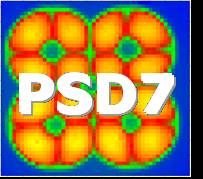Speaker
Mr
Manuel Caamano Fresco
(University of Santiago Compostela)
Description
With the recent improvement in the field of exotic beam, especially
with the SPIRAL facility at GANIL, a new area of the nuclear chart
is now available for experimentation. Nevertheless the intensity of
such beams is still relatively low (few thousands of particles per
second), and for some reactions of interest the cross sections are
low. Thus it is essential to be able to perform experiments using
detectors which cover the larger possible solid angle with the best
achievable resolution on any measured parameters. It is also
necessary to use thick targets to increase the reaction counting
rates, but this should be done without loss of resolution. We
developed the MAYA detector to fulfil all these experimental
requirements. MAYA is a gaseous active target detector: the gas is
used as detection material and also as target. MAYA allows tracking,
identification and kinematics measurement for all the participants
of binary direct reactions. This detector is able to work at gas
pressure of up to 3 atmospheres, as a way to increase the density
and thus the thickness of the target. The tracking capability
prevents any loss of resolution, especially on the reaction energy
that usually occurs in such cases and also allows a very low
threshold in energy of reactions. The design of this detector and
the rather new electronics which is used will be showed during this
presentation. Some recent preliminary results will also be presented
in order to show the possibility and the resolutions of the measured
kinematics parameters (reaction energy, energy or range and angle
for the recoil and scattered particle) of this detector.
Primary author
Dr
C.E. Demonchy
(University of Liverpool)
Co-author
Mr
Manuel Caamano Fresco
(University of Santiago Compostela)
